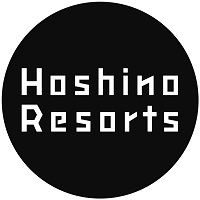 |
SOFT OPENING OF “HOSHINO RESORTS KAI BEPPU” ON JUNE 4TH, 2021 (Japon)
As the 18th property of the KAI brand, Hoshino Resorts, a hotel management company that operates over 40 properties within and outside of Japan, has opened “Hoshino Resorts KAI Beppu” in Beppu Onsen, Oita Prefecture on June 4, 2021. |
Catégorie : Asie Pacifique - Japon - Économie du secteur
- Ouvertures d'hôtels
Ceci est un communiqué de presse sélectionné par notre comité éditorial et publié gratuitement le lundi 07 juin 2021
Following “Hoshino Resorts KAI Aso” in Oita Prefecture, and “Hoshino Resorts KAI Kirishima” in Kagoshima Prefecture, it is the third property in Kyushu.
Designed by architect, Kuma Kengo, the interior has a cobblestone alleyway and an arcade area, which will be reminiscent of a lively hot spring town.
Moreover, all guest rooms are KAI Signature Rooms, where local culture and characteristics of the region are reflected, and to support local Bungo tie-dyeing techniques and artists, their works are incorporated in the rooms.
About Hoshino Resorts KAI Beppu
Beppu is an area famous for its hot springs, where it is a place that has the greatest number of hot spring sources and amount of hot spring water in Japan.
KAI Beppu is located in the Kitahama district, which overlooks Beppu bay.
Since the opening of the old Beppu port back in the Meiji period, many hot spring lovers from all over Japan were able to visit this historical area.
Beppu became a renowned hot spring town of Japan, full of life both day and night.
The interior is structured in a way that is reminiscent of a lively hot spring town, full of entertainment, incorporating a cobblestone alleyway and arcade areas.
Interior design that is reminiscent of a lively hot spring town
Once you step inside the building, there is an open terrace overlooking the Beppu bay, which is connected to the lobby.
A hand bath and footbath are located near the terrace, where one can relax as the sea breeze passes by.
At the back of the lobby, there is a cobblestone alleyway, illuminated by Japanese paper lanterns, shops with specialty products of Beppu, and an arcade with traditional games, creating a festive environment.
Further along the alleyway, there will be a bathhouse where the baths are separated by gender.
The famous Beppu hot spring water can be enjoyed in the baths for pure relaxation.
Characteristics of KAI Beppu
“KAI Signature Rooms” with an ocean view and decorated with Bungo tie-dye fabrics
All guest rooms at KAI Beppu have an ocean view.
One of the characteristics of the room is that it features a “picture window”, where the view of the sea is “cut out” as if it is a painting.
In order to enhance the color of the sea, the walls, shoji doors (paper screen doors), and glass in the bathroom all incorporate a pink-brown color called “Kakishibu” (directly translates to bitter persimmon).
This kakishibu color is inspired by the red color of the “Chinoike Jigoku” (Bloody Pond Hell) in Beppu, and the earthiness of the lava plateau, where the hot spring is found.
In addition, all 70 guest rooms are KAI Signature Rooms.
One feature of the KAI brand is its inclusion of regional culture and handcrafts in the rooms. Bungo tie-dye fabrics are used for the headboards and foot throws, giving the room its uniqueness that can only be found at KAI Beppu.
What is Bungo tie-dyeing technique?
Bungo tie-dyeing technique originates in Oita Prefecture. In the present day, tie-dyeing techniques are separated into two main groups, the silk tie-dye of Kyoto and the cotton tie-dye in Nagoya (Arimatsu and Narumi area).
It is said that the Bungo area, an old name for Oita, brought the cotton tie-dye technique to Nagoya. Although there are records of mass production of the tie-dye fabrics during the Edo period, production decreased since the Meiji period and so, efforts have been made to restore it in recent years.
Tie-dye artist, Hiroko Ando
While working at Aichi University, I accompanied an investigation of the local industry in Arimatsu and Narumi area of Nagoya and learned about the technique of Bungo tie-dyeing technique. Although we started the investigation in Oita, which is my hometown, there were very few people who knew about Bungo tie-dye.About 30 years ago, we opened the “Yusoukai” in the hopes for more people to be aware of this local dye technique. Currently, while working on my own projects and workshops, I am involved with the production of the KAI Signature Rooms.
Hot springs with a Japanese garden, illuminated by soft light
A view of a Japanese garden can be enjoyed from the public hot springs and there is an outdoor and indoor bath.
There are two indoor baths, the “Atsuyu” (hot water), which flows directly from the source, and the “Nuruyu” (warm water). It is a hydrogen carbonate spring so it has properties of baking soda, where it can soften and smoothen the skin. In addition, it is high in sodium, so it allows the body to retain heat.
There are over 2,000 hot spring sources in Beppu and because the water at KAI Beppu is one of the most gentle on the skin, we recommend our bath as the last place to visit for hot spring hopping.
Hot spring water quality: sodium chloride, hydrogen carbonate pH: 7.2
Dining experience savoring the locally sourced produce of Oita Prefecture
Guests can enjoy Kaiseki-style course meals presented on Oita’s traditional handmade plates and bowl at the semi-private dining rooms for dinner.
There will be unique dishes using noodles with Oita’s specialty, Kabosu citrus, similar to lime, and its presentation is also a key component of the course, where some use bamboo ware to serve the dish.
The main dish for the special Kaiseki-style course meal is the “Bungo Nabe” (hot pot).
Seafood caught from the coastal waters is stewed with chicken and beef, and by adding Kabosu citrus, guests can enjoy two flavors, the rich and the refreshing.
|
|






